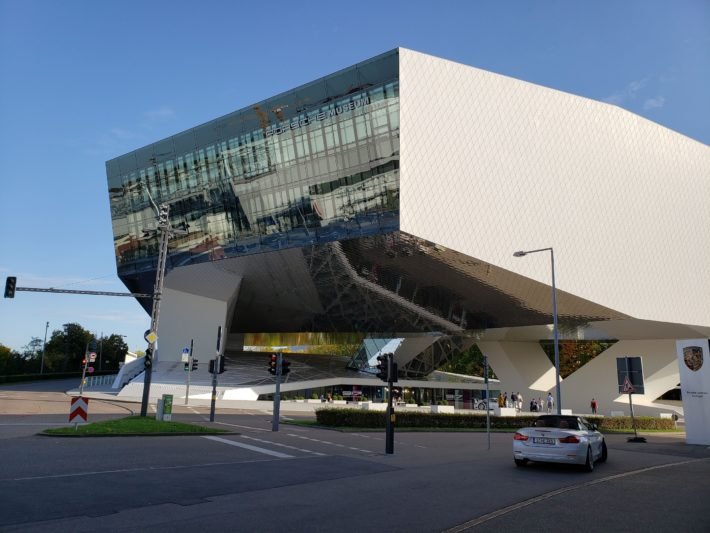
Opened in 2009, the Porsche Museum has a futuristic architectural concept in which the building is only supported by 3 V-shaped columns, that makes the structure appear to float like a monolith. A beautiful glass facade also stands out.
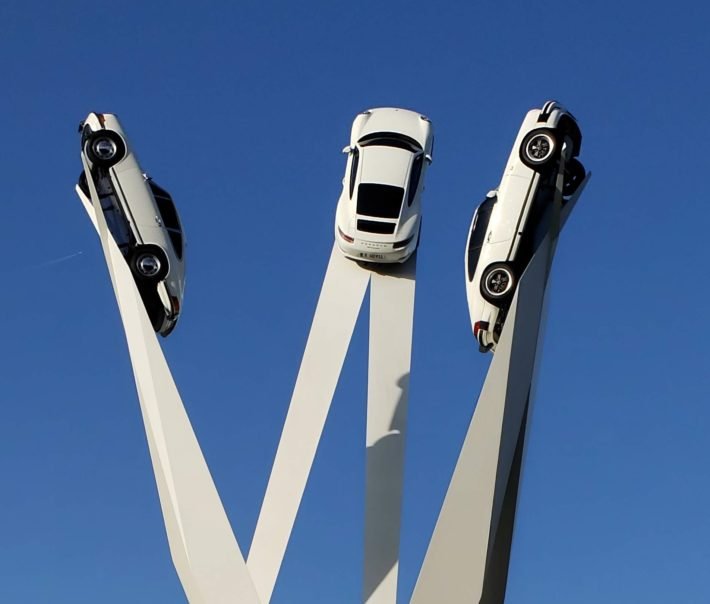
At Porscheplatz, a small roundabout in front of the museum, a three-pillar V-shaped sculpture is eye-catching. Each V-shaped pillar has a Porsche 911 vehicle at the top.
History of Ferdinand Porsche and his company
It is impossible to speak of Porsche without talking about its founder, Ferdinand Porsche. He was an automobile engineer known for his innovative designs, but whose Nazi past ended up obscuring his genius.
Ferdinand Porsche was born in Bohemia in 1875. He was the son of a master panel-beater. At the time, the city where he was born (currently Vratislavice nad Nisou in the Czech Republic) belonged to the Austro-Hungarian Empire. From an early age, Ferdinand demonstrated a great aptitude for mechanical work. He started taking classes at the Imperial Technical School while helping his father at night (source: Wikipedia).
At the age of 18, Porsche moved to Vienna, where he took on a job at Vereinigten Elektrizitäts AG. In that company, he developed the famous electric wheel hub motor. In 1899, Porsche went to the Lohner factory, at the time Austria’s largest coach manufacturer. There, he designed the world’s first hybrid car and also the world’s first all-wheel-drive vehicle. In 1906, Porsche left Lohner to work as chief designer for Austro-Daimler in Wiener Neustadt (source: Porsche.com).
- In 1909, his son “Ferry” Porsche was born. In the future, Ferry helped him to found Porsche GmbH and after World War II he took over the company.
After World War I, with the Austro-Hungarian Empire dissolution, Porsche assumed Czechoslovak nationality.
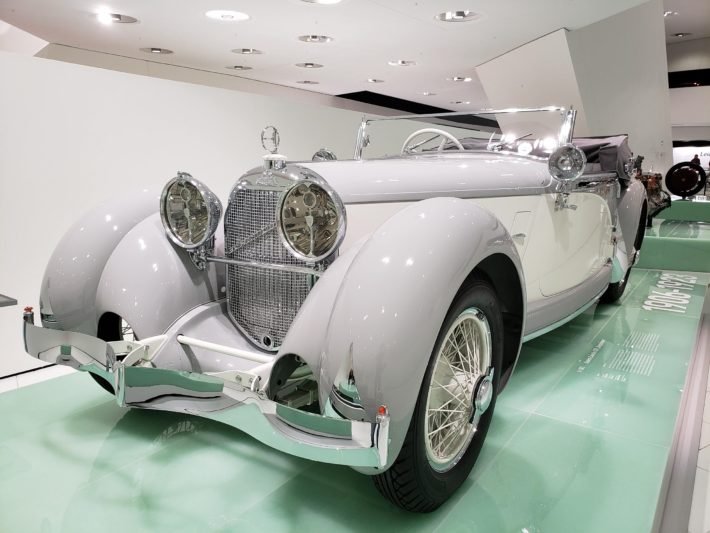
In 1923, he went to Stuttgart, which was already an important automobile center in Germany. In 1931, he founded Porsche GmbH. At first, the company provided design and consulting services for motors and vehicles. Its engineering office was located on Kronenstraße 24, in Stuttgart’s city center, very close to the Main Train Station (Hauptbahnhof). The building is still there.
There, he worked with 20 employees and his son Ferry. During this period, Porsche started to provide services to several other companies, such as Wanderer, Zündapp, and NSU. There were no vehicles with the Porsche brand yet.
Ferdinand Porsche and Nazism
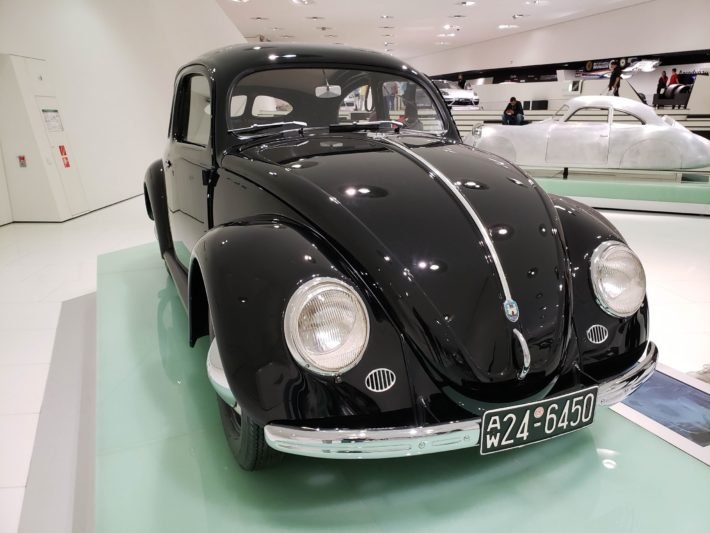
In 1933, Adolf Hitler wanted to create the “people’s car” (Volkswagen), popularizing access to motor vehicles in Germany. Ferdinand Porsche, who was considered by the Nazis to be a “great German engineer” took over the project.
However, Hitler considered the Czechs “subhuman”. In 1934, Porsche abdicated Czechoslovakian nationality and applied for German citizenship. Later then, Porsche joined the Nazi party in 1937 and became an SS-officer reaching the rank of SS-Öberführer (source: Wikipedia).
As for the people’s car, Hitler wanted a basic vehicle that could transport two adults and three children at 100 km/h (62 mph) without using more than 7 liters (1,82 gallons) of fuel per 100 km (62 miles). The Kdf-Wagen (later known as Käfer) was designed but production started only in 1938 with the construction of the Volkswagen plant in Fallersleben (currently Wolfsburg). By the way, the picture of Ferdinand Porsche alongside Hitler on Volkswagen’s foundation (1938) is very famous.
In 1938, the Porsche company moved to Zuffenhausen, district of Stuttgart, where it remains until today.
During World War II, Porsche was responsible for the design and construction of war tanks. His factory was bombed by the Allies. As a result, in 1944, Porsche relocated its company to Gmünd in Austria.
The forced labor at the Porsche factory during Nazism
During World War II, the Porsche company made use of forced labor by foreigners of various nationalities. Polish Jan Karolczak started working at the company at age 21 and told his story to Spiegel Magazine (Source: Nils Klawitter, The Dark Pre-History of the World’s Favorite Sports Car).
His city, Krotoszyn, Poland, was occupied by the Nazis during the war. In February 1942, he received an order from the German employment service designating him to work. He went to Stuttgart with 20 other Poles to work for the Porsche Company.
Karolczak says he slept in a cold and dirty building and spent his days assembling crankshafts. As a salary, he received only 60 marks per month. Workers were supposed to wear a “P” on their clothes but that letter didn’t mean Porsche but Polish. Because of this sign, they were not admitted to places such as movie theaters or even air raid shelters.
By the way, during the Allied air bombing raids, foreign workers were forced to stay at the factory so that, should there be a fire, they would be ready to put it out. In this case, they received only 1.5 marks as a reward. Karolczak recalls there were forced workers of various nationalities: Dutch, Moroccans, French, Italians, and even Russian women.
After World War II
After World War II, Porsche went to France, where he was arrested along with his children, accused of war crimes. His son Ferry was released after 6 months, but Ferdinand remained in prison until 1948.
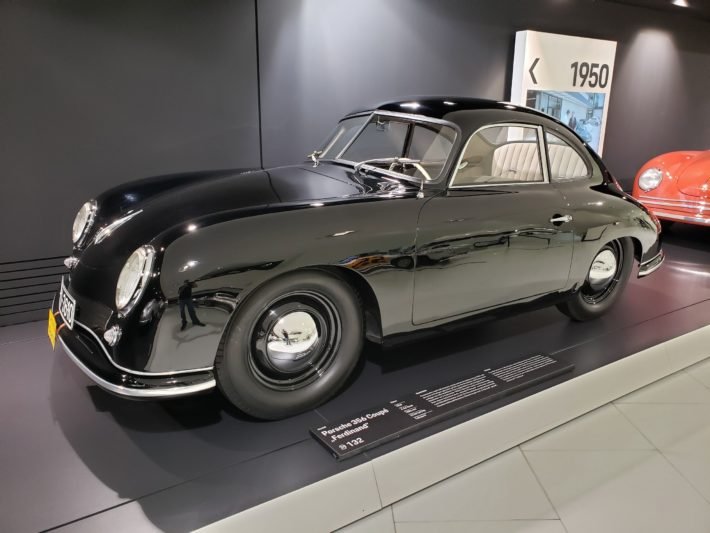
In that period, Ferry took over the company and launched the first vehicle with the official Porsche emblem. It was the Porsche 356, produced in Gmünd, Austria. He returned to Zuffenhausen only in 1950.
Ferdinand died in 1951. Since then, the company has grown to become one of the world’s leading sports car producers. Currently, Porsche AG is a corporation that is part of the Volkswagen group. Porsche AG has 35,000 employees and produces 280,000 cars a year.
Museum Exposition and Structure
The Porsche Museum has an exhibition space of 5,600 m2. The museum consists of two floors and two mezzanines. In addition to the exhibition, the building has a restaurant, a cafeteria, a souvenir shop, and underground parking lot.

The exhibition shows a little about Ferdinand Porsche’s history, from the development of the first cars to the current ones. There are more than 80 vehicles on display that include vintage cars, competition vehicles (especially Formula 2 and Le Mans), tractors, SUVs, and even police cars. But, what the visitor will find most are sports cars. Some of them are incredibly beautiful! Check out, for example, the Porsche 918 Spyder (cover photo).
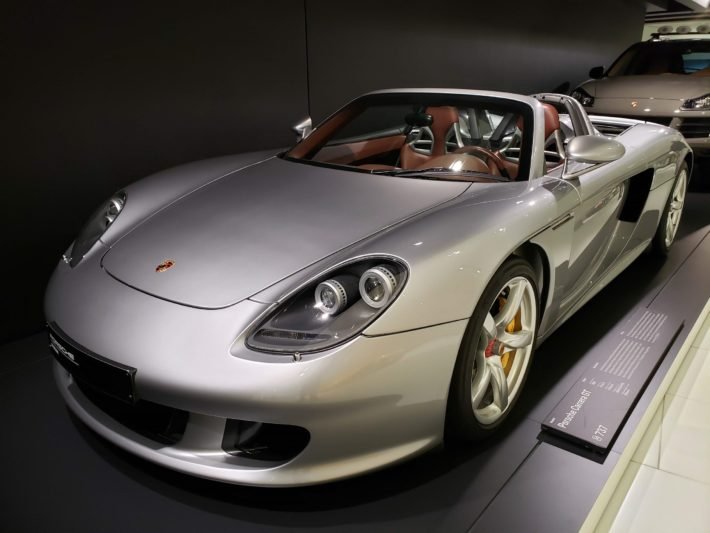
For each vehicle exposed, there is a plate containing technical information such as year of manufacture, type of engine, speed, and power.
In addition to the vehicles, there are some spaces of interaction for visitors, such as accelerators, buttons for starting vehicles, two simulators, and some vehicles where you may take a seat.
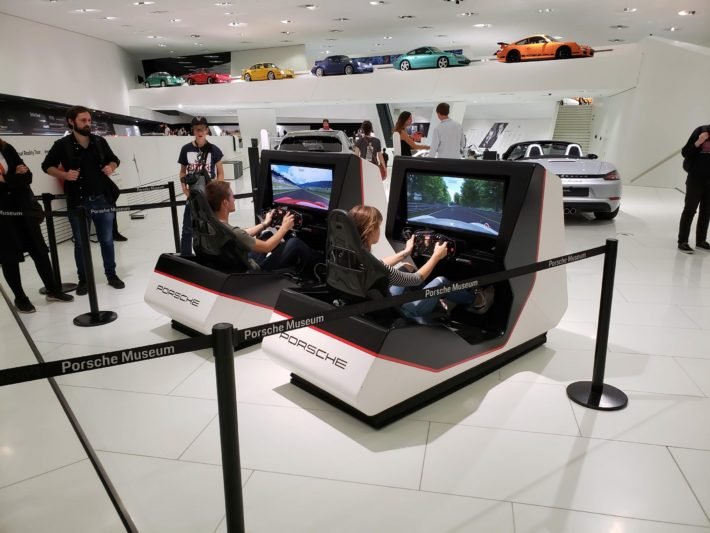
Recently, a Touch Wall was also installed in the Porsche Museum. It’s a 12-meter-long touchable screen where visitors can see more than 3,000 photographs, drawings, posters and advertisements related to Porsche, allowing the visitor to take a journey through time.
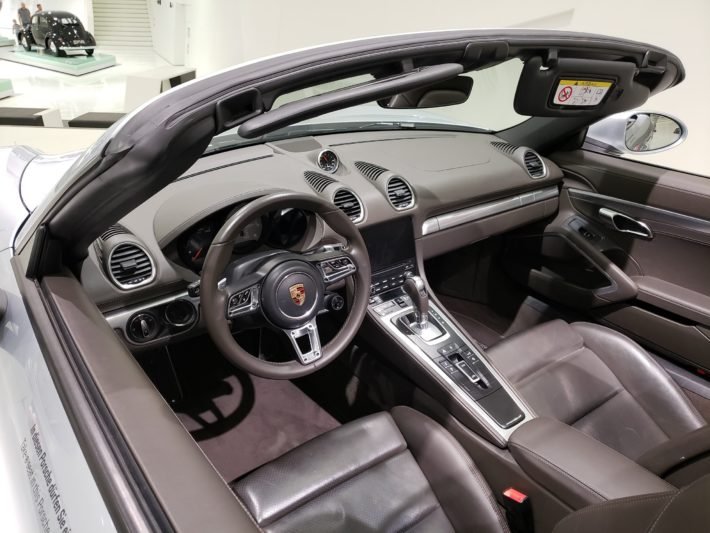
Right at the entrance, the visitor takes an immense escalator that allows him to have a panoramic view of the museum. The exhibition is divided into the sectors below, each highlighting some characteristics or qualities of the Porsche brand.
Prologue
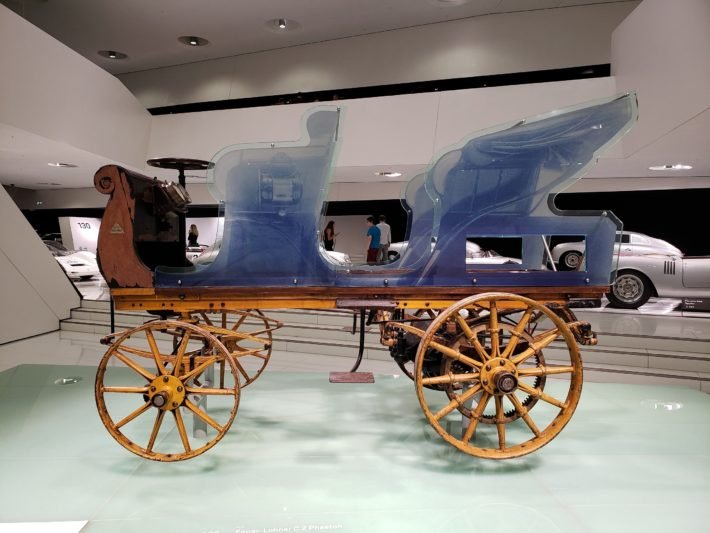
The Prologue sector is dedicated to presenting the milestones of Ferdinand Porsche’s life. Vehicles designed by Porsche but produced by other companies are exhibited, such as the Beetle (Käfer), the Austro-Daimler ADR Bergmeister and the Egger-Lohner-Elektromobil – P1.
| The electric vehicle “Egger-Lohner C.2” is considered the first produced by Ferdinand Porsche. It drove through the streets of Vienna for the first time on June 26, 1898. It was known internally as “P1”. |
Light
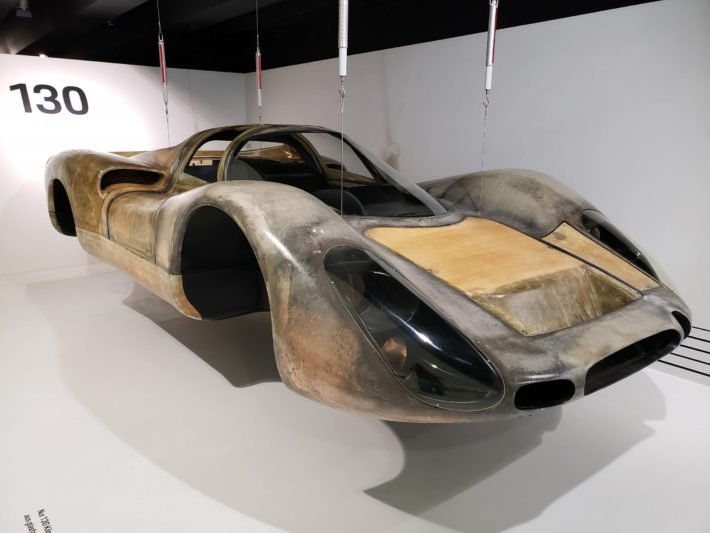
The Light sector highlights the relationship between vehicle weight and power.
Clever
The Clever sector seeks to highlight the intelligent solutions adopted by Porsche and its technological challenges.
Fast

The fast sector highlights the speed of Porsche racing vehicles, including aerodynamics and control. An inverted vehicle illustrates that under a speed of 320 km/h (198 mph) the car can, in theory, take off.
Powerful
The Powerful sector highlights Porsche’s high-performance engines.
Consistent

The Consistent sector highlights Porsche’s consistent line of vehicles, such as the 911, passing from generation to generation.
Sound Showers
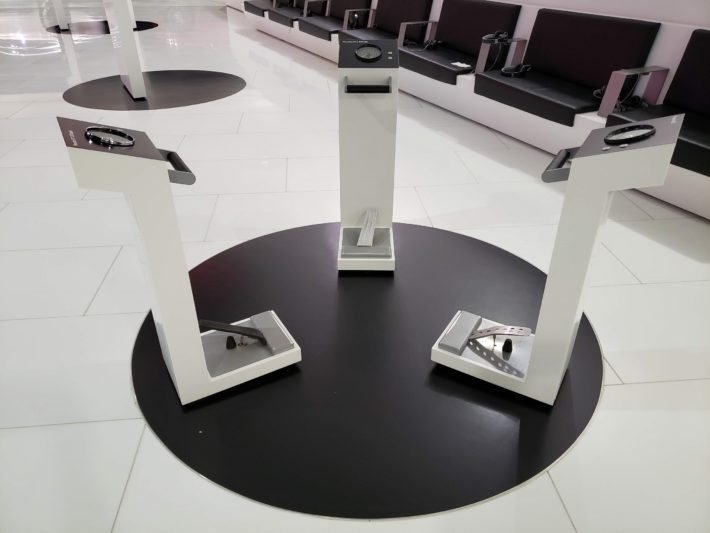
The Sound Showers sector contains spaces of interaction designed to simulate the sounds of different engines.
Special Tours
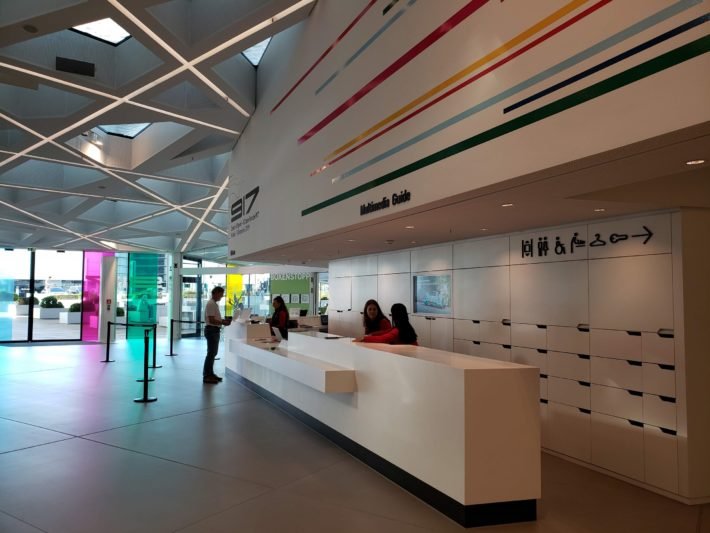
Besides visiting the Porsche Museum on your own, you also have many kinds of guided tours, including factory tours. As a rule, you must make a reservation in advance. For more information about assembly line tours, contact us by email: factorytours@porsche.de.
Below are some tours you may find interesting.
Open Museum Tour
On this guided tour, you will learn about the company’s history from 1875 to the present day. The first person to register at the museum cashier, on the day of the visit, decides the language of the tour (depending on availability). This tour takes place at 11 am and 3 pm. The price of the Open Museum Tour is 5.80 Euros per person, but the museum’s entrance fee is not included in the price.
718/911 Factory Tour
On this tour, you get to know the assembly line of Porsche 911 and of 718 Boxster and Cayman models. Depending on the season, it’s also possible to visit the assembly of Porsche 911 competition versions.
The tour departs from the museum’s foyer. You can book this tour privately or in a mixed group with other visitors. The tour price is 9.70 Euros per person for open tours. For private tours, the price is 146 Euros for up to 15 people. The minimum age of participants is 8 years.
Taycan Factory Tour
On this tour, the visitor gets to know the Taycan assembly line, the first fully electric Porsche. This tour is partially done by bus between the museum and the painting workshop.
The tour departs from the museum’s foyer. You can book this tour privately or with a mixed group of visitors. The tour price is 14.60 Euros per person for open tours. For private tours, the price is 219 Euros for up to 15 people. The minimum age of participants is 8 years.
Porsche Drive
At the Porsche Museum, it is possible to rent and enjoy a Porsche vehicle for at least 3 hours. The rental price is from 193 Euros and varies depending on the vehicle model and the rental period. It is important to mention that the rental is only made for people over 25 years old, with at least 5 years of driving license.
If you come from a non-EU country, it’s necessary to present the International Driver’s License, as well as the National Driver’s License. Rental car reservations can be made on Porsche Drive website. Be sure to read the rental terms and conditions carefully. Porsche vehicles can also be rented in other cities and countries.
Useful Information
How to get to Porsche Museum?
The Porsche Museum is situated in the Zuffenhausen district, 10 minutes by train from Stuttgart Central Station. To get there, you can get off at the S-Bahn station Neuwirtshaus (Porscheplatz) using lines S6 or S60, which is next to the museum.
By metro, the nearest station is Salzwiesenstraße (U15). Getting off at that station, just take a 12-minute walk (950 meters) down the Strohgäustraße to the museum.
As I was staying in a Zuffenhausen hotel, I went to the museum on foot.
Opening hours
The museum is open from 9 am to 6 pm, from Tuesday to Sunday. The last entry takes place at 5:30 pm. The museum is usually open on holidays, except Christmas and New Year.
Tickets
The entrance costs 9.70 Euros for adults and 4.80 Euros for students, retirees, unemployed and people with special needs. There are also discounts for those who visit the museum after 5 pm (evening ticket).
Porsche Museum Virtual Tour
Know that it is possible to take a virtual tour of the Porsche Museum? Click here, but don’t forget to enable Adobe Flash Player 9 in your browser.
More Info
For more information about visiting the museum and guided tours (except factory tours), send an email to info.museum@porsche.de.
Is it worth visiting the Porsche Museum?

For those who are car enthusiasts, it is definitely worth visiting the Porsche Museum. However, for laypeople, as is my case, I have sincere doubts.
The cars are exposed but without much explanation about their design, manufacture or development. The signs next to each vehicle contained only some technical information which makes the visitation even a little boring. I confess that I learned very little when visiting the Porsche Museum.
The museum structure shows that it’s more dedicated to promoting the Porsche brand than bringing some knowledge to visitors. There is also no well-defined visitation itinerary.
Furthermore, the museum is not as interactive as it promises. There are few interactive stations and activities, with rare exceptions, are somewhat dull (eg, listening to a roar of the engine).
| An important criticism of the museum is the lack of a mea-culpa for the company’s role during Nazism. According to Nils Klawitter (op. cit.), unlike Volkswagen, which allowed an investigation into forced labor during the Nazi era (click here to read the report), Porsche preferred to remain silent on that matter. The company usually minimizes the number of people forced to work at its factories. |
Tourists who visited the Mercedes Benz Museum in Stuttgart ended up preferring it over the Porsche Museum. But it’s up to you!
- If you liked this article, check out all our English posts!



